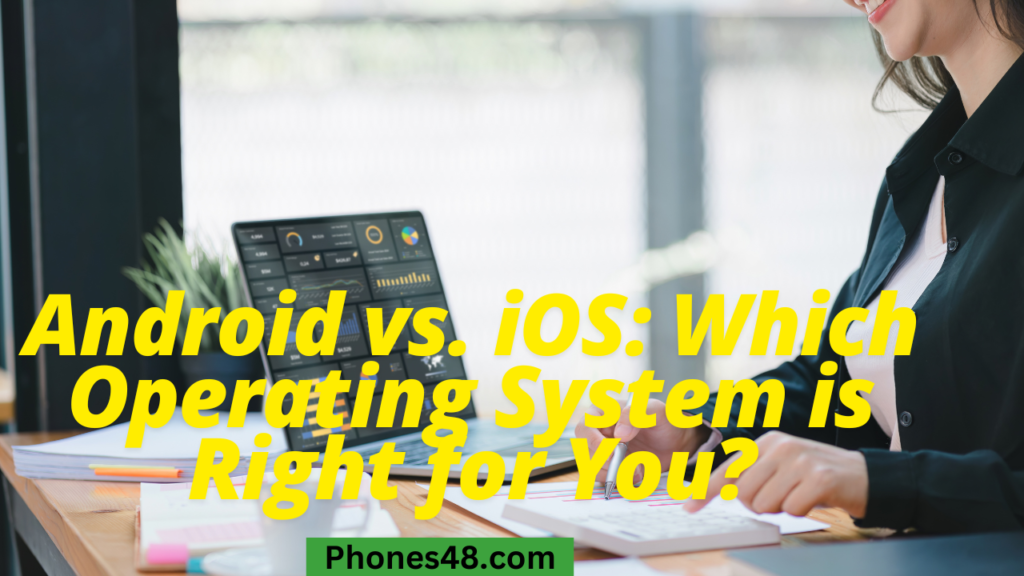Introduction to Foldable Phones
The advent of foldable phones has brought a wave of excitement, innovation, and skepticism to the tech world. These futuristic devices are turning heads with their ability to transform from a standard-sized smartphone into a tablet-like display in the blink of an eye. But are they all they’re cracked up to be? In this article, we’ll dive deep into the realm of foldable phones, exploring their features, advantages, drawbacks, and whether they’re worth your hard-earned money.
What Are Foldable Phones?
Foldable phones are a new breed of smartphones designed to bend, fold, or flip without breaking. Thanks to advancements in flexible display technology, these devices can switch between compact and expanded modes, offering a unique blend of portability and functionality. Whether it’s folding vertically or horizontally, these phones have redefined how we interact with mobile technology.
Brief History and Evolution of Foldable Technology
The concept of foldable devices isn’t entirely new. It began with flip phones like the Motorola Razr back in the early 2000s, but the modern take on foldables kicked off with Samsung’s Galaxy Fold in 2019. Since then, brands have been racing to perfect this innovative design, pushing the boundaries of technology and design aesthetics.
The Hype Behind Foldable Phones
Foldable phones are often marketed as revolutionary. They promise a tablet experience in a smartphone body, greater multitasking capabilities, and unparalleled visual appeal. With tech giants investing heavily in this sector, it’s no wonder they’re seen as the next big thing. But does the hype translate into real-world value?
Features of Foldable Phones
Foldable phones pack cutting-edge features that set them apart from traditional smartphones. Let’s unpack what makes these devices so special and why they’re often considered a leap forward in mobile technology.
Innovative Display Technology
The centerpiece of any foldable phone is its display. Using advanced materials like ultra-thin glass (UTG) and flexible OLED technology, these screens can bend and flex without cracking. The result? A larger display area in a smaller form factor. This innovation enables foldables to serve as both smartphones and tablets, offering versatility for users who want the best of both worlds.
Hardware Advancements in Foldable Devices
Foldable phones boast powerful processors, high-resolution cameras, and premium build quality. Manufacturers have gone to great lengths to ensure the hinges are robust yet seamless, providing a smooth folding experience. Features like 5G connectivity, larger batteries, and enhanced cooling systems are often included to match the demands of the dynamic displays.
Software Adaptations for Foldable Screens
Software optimization plays a critical role in making foldable phones functional. Operating systems like Android have been specifically adapted to support split-screen multitasking, app continuity, and intuitive gestures. For instance, you can watch a video on one side of the screen while scrolling through your social feed on the other.
Multitasking and Productivity Potential
Foldable phones are a game-changer for productivity. Professionals can run multiple apps simultaneously, drag and drop files between windows, and even use the device as a dual-screen workstation. Whether you’re editing a document or sketching a design, foldables provide the flexibility to do more on the go.
Advantages of Foldable Phones

Foldable phones come with several perks that cater to tech enthusiasts, professionals, and casual users alike. Here are some of the standout benefits:
Portability Meets Functionality
Imagine carrying a device that’s as compact as a standard smartphone but unfolds into a mini-tablet when needed. Foldable phones achieve this balance perfectly, eliminating the need to carry multiple devices.
Cutting-Edge Design Appeal
Let’s face it—foldable phones are eye-catchers. Their sleek, futuristic designs make a statement, turning heads wherever you go. Owning one is like having a piece of tech from a sci-fi movie.
Enhanced Viewing Experience
With larger, high-resolution displays, foldable phones offer an immersive viewing experience. Whether you’re streaming movies, gaming, or browsing, the expanded screen real estate enhances visual enjoyment.
Drawbacks of Foldable Phones

As impressive as foldable phones are, they come with their fair share of challenges. Let’s explore some of the downsides:
Durability Concerns
One of the most significant concerns with foldable phones is their durability. The flexible screens are more prone to scratches, dents, and damage from everyday use compared to traditional glass displays. Additionally, the hinge mechanism, while robust, isn’t immune to wear and tear.
Hefty Price Tags
Foldable phones are not for the faint-hearted—or the faint-walleted. Their cutting-edge technology and premium materials come at a steep cost, often exceeding $1,500 for flagship models. For many, the price point remains a major deterrent.
Limited Device Compatibility
Foldable phones sometimes struggle with app compatibility. Not all applications are optimized for their unique aspect ratios, leading to glitches or less-than-ideal user experiences.
Software Optimization Issues
Although software for foldables has improved, it’s not perfect. Some users report lag, app crashes, and inconsistencies in how apps adapt to different screen modes.
SeeThis Also
What to Do If Your Phone Gets Wet Step-by-Step Recovery Guide
How to Troubleshoot Common Mobile Phone Issues
Gaming on a Budget Affordable Smartphones for Gamers
Mobile Display Technologies: AMOLED, LCD, and OLED Explained
Cost Analysis: Are Foldable Phones Worth It?
Pricing Compared to Traditional Smartphones
Foldable phones are typically two to three times more expensive than conventional smartphones. While you’re paying for innovation, the high cost raises the question of value, especially when non-foldable flagship models offer comparable performance at a lower price.
Depreciation and Resale Value
Foldable phones depreciate faster than their traditional counterparts due to concerns about durability and niche market demand. If you plan to sell or trade in your device later, you might not recoup as much of your investment.
Key Players in the Foldable Phone Market

Samsung’s Dominance with Galaxy Z Series
Samsung has led the charge in foldable technology with its Galaxy Z Flip and Z Fold series. These devices boast polished designs, robust hardware, and consistent software updates, making them a favorite among foldable enthusiasts.
Motorola’s Revival with the Razr Lineup
Motorola’s foldable Razr phones combine nostalgia with modern technology. While not as feature-packed as Samsung’s offerings, the Razr’s compact, stylish design has a dedicated fanbase.
Emerging Competition from Other Brands
Other players like Huawei, Oppo, and Xiaomi are entering the foldable space, offering innovative designs at competitive prices. These brands are pushing the boundaries of what foldable phones can do, intensifying the competition.
Use Cases for Foldable Phones
Foldable phones cater to a variety of needs and lifestyles, making them a versatile option for different users. Let’s delve into some practical applications where these devices shine.
Multitasking for Professionals
Imagine being able to edit a spreadsheet on one half of the screen while referencing a presentation on the other. Foldable phones allow for seamless multitasking, which is invaluable for professionals who are always on the move. Whether you’re replying to emails or conducting a video conference, foldables make juggling tasks a breeze.
Enhanced Gaming Experience
Gamers will appreciate the expansive screens and immersive visuals foldable phones offer. Titles like PUBG or Genshin Impact look stunning on the larger displays, and the increased screen real estate can also improve gameplay precision.
Creative Work on the Go
For creatives, foldables act as a mobile canvas. Whether sketching, photo editing, or designing, the tablet-like functionality of these phones allows you to unleash your creativity anywhere. Apps like Adobe Photoshop and Canva are particularly enjoyable on foldable screens.
Improved Media Consumption
Binge-watchers rejoice! Foldable phones provide a mini-theater experience with their vibrant, large screens and crisp sound quality. Whether you’re catching up on Netflix or streaming your favorite YouTube creators, the foldable format enhances viewing pleasure.
Technological Challenges in Foldable Phones
Despite their many advantages, foldable phones face significant technical hurdles that manufacturers continue to tackle.
Hinge Longevity
The hinge mechanism, a crucial component of foldable phones, must withstand thousands of folds without degrading. Achieving this balance of durability and flexibility is no small feat. Even with advanced engineering, some users report creaking or loosening hinges over time.
Display Wear and Tear
Foldable screens are more susceptible to wear, such as creases and scratches, compared to traditional glass screens. While companies are improving materials like ultra-thin glass, it’s still not as sturdy as non-flexible displays.
Battery Efficiency
Foldable phones often have larger displays, which consume more power. Balancing battery life without compromising the slim design of these devices remains a challenge.
Weight and Bulk
Although foldables aim to be portable, they are generally bulkier and heavier than standard smartphones. This can be a drawback for users who prioritize pocketability.
Future Innovations in Foldable Phones

Foldable phones are still in their infancy, and there’s plenty of room for growth. Let’s explore what the future might hold for this exciting technology.
Rollable and Expandable Displays
The next generation of foldable technology may include rollable or expandable screens. Imagine a phone that extends horizontally or vertically to create even larger display areas without adding bulk.
Self-Healing Screens
Some manufacturers are experimenting with materials that can repair minor scratches and dents on their own. This innovation could significantly enhance the durability of foldable displays.
Improved App Ecosystem
As foldables become more popular, app developers are likely to prioritize optimizing their applications for these unique screens. This could lead to a smoother, more integrated user experience.
More Affordable Options
Currently, foldables are a luxury item, but as production scales and competition increases, prices are expected to drop. This will make the technology accessible to a broader audience.
Environmental Impact of Foldable Phones
Increased Resource Use
The production of foldable phones involves complex manufacturing processes and advanced materials, which often require more resources than traditional smartphones. This raises concerns about sustainability.
E-Waste Concerns
Foldable phones, with their shorter lifespan due to durability issues, may contribute to the growing problem of electronic waste. Recycling initiatives and eco-friendly designs could help mitigate this impact.
Are Foldable Phones a Passing Trend or the Future of Mobile Tech?
Opinions are divided on whether foldable phones will become mainstream or remain a niche luxury. Their high cost, durability concerns, and niche appeal may limit their adoption, but their innovative features and potential for growth make them a compelling proposition for tech enthusiasts.
Conclusion: Are Foldable Phones Worth the Investment?
Foldable phones are undeniably a marvel of modern technology, offering versatility, innovation, and a glimpse into the future of mobile devices. However, they come with a hefty price tag and several challenges, such as durability and app compatibility. Whether they’re worth the investment depends on your priorities. If you value cutting-edge tech and are willing to pay a premium for it, foldables can be a game-changer. On the other hand, if you’re looking for reliability and cost-effectiveness, traditional smartphones might still be the better choice.
FAQs
1. Are foldable phones durable enough for everyday use?
Foldable phones are durable enough for most users, but their flexible screens and hinge mechanisms require more care than traditional smartphones.
2. Why are foldable phones so expensive?
The high cost of foldable phones is due to their advanced technology, premium materials, and complex manufacturing processes.
3. Do all apps work well on foldable phones?
Not all apps are optimized for foldable screens, but this is improving as the technology gains popularity.
4. Are foldable phones better for gaming?
Yes, the larger screens and immersive displays make foldable phones an excellent choice for gaming enthusiasts.
5. Will foldable phones replace traditional smartphones?
It’s unlikely that foldable phones will entirely replace traditional smartphones in the near future, but they may carve out a significant niche in the market.





